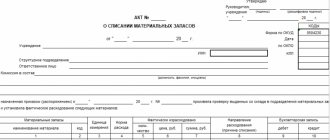Legal basis of activity
In 2022, the procedure for the activities of the HOA is regulated by the provisions of Art. 50 Civil Code of the Russian Federation.
This norm established the possibility of uniting owners of residential premises to manage an apartment building (MCD). This union has a collegial form.
A voluntary basis for joining the HOA is provided. Provisions of Art. 135 of the RF Housing Code indicate the order in which the organization’s activities are carried out.
Tax responsibilities of HOAs
What tax payments a partnership is subject to are specified in the Tax Code of the Russian Federation.
These include fees:
- at a profit;
- related to added value;
- to the ground;
- transport fee.
The partnership also pays property taxes. The tax base does not include contributions received from HOA members. If a citizen is not a member of a partnership, he is still responsible for paying for housing and communal services, since he lives in the house.
Please note : these payments are not targeted, therefore taxes are paid on them. In addition, payments are accrued in connection with the conduct of commercial activities related to the rental of premises and local area.
What affects the amount of tax
The homeowners association in an apartment building pays taxes depending on what income the organization receives. Funds received for the maintenance of MKD are subject to fees.
The amount of fees depends on whether an agreement is concluded between the partnership and the organization that operates and manages the house. Should the HOA pay taxes in the event of such an agreement, it is stated in Art. 135 Housing Code of the Russian Federation. In this case, funds for the maintenance of the MKD go to the organization, and therefore the fees become its obligation.
In the absence of an agreement, the partnership is responsible for paying taxes. Contributions made by residents are targeted; they are not taken into account when calculating the amount. The exception is the situation when these funds are used to pay for the activities of members of the HOA board, as well as employees, for example, electricians, janitors.
Important! The final amount of accruals depends on the size of the commercial activity being implemented. Including renting space for advertising purposes.
Blog
Photo source: https://www.pexels.com/
Amid mass hysteria over the coronavirus, Putin addressed the people and promised that support would be provided for small businesses. I will not describe my feelings from this help, since they have already been described here
. In this fairly short article, I will talk about reducing insurance premiums to 15% for small businesses in questions and answers.
1.
Where do legs grow from?
a bill there
, which describes measures to support small businesses in the form of reducing insurance premiums to 15 percent. The texts of bills are quite difficult to read, since they are often “tugged up” with pieces of amendments and indicate in which place what to remove and where to add what.
We are only interested in a small part of the bill, which we will talk about.
2.
Who does the reduced insurance premium rate apply to?
The bill directly states that the norms of the Tax Code of the Russian Federation will apply to “ payers of insurance premiums recognized as small or medium-sized businesses
in accordance with the Federal Law of July 24, 2007 No. 209-FZ “On the development of small and medium-sized businesses in the Russian Federation
” (hereinafter referred to as 209-FZ).
We open the above law and look at the criteria for recognizing the payer of insurance premiums as a small and medium-sized enterprise (hereinafter referred to as SMP):
Criteria for a small enterprise, which includes the lion's share of the management company
— average headcount of no more than 100 people and income of no more than 800 million rubles. A minimum of 51% of the authorized capital of the management company must belong to individuals or organizations - SMP. The share of organizations not related to the SMP should not exceed 49%, the share of the state, regions or NPOs - 25% (clause “a”, clause 1, part 1.1, article 4 of Law No. 209-FZ).
Medium Enterprise Criteria
(such management organizations are much less common) - the average number of employees is no more than 250 people and the income is no more than 2 billion rubles. The restrictions on the structure of the authorized capital are the same as for small enterprises.
That is, if your management organization meets the above criteria, then from April 1, 2022 it can receive a “gift” from the state in the form of reduced insurance premiums.
note
: on the Federal Tax Service website
a link
to the official Unified Register of Small and Medium-Sized Enterprises, where you can enter the TIN of your company and check your company.
If your management company meets the criteria, but is not in the Federal Tax Service register, then you need to electronically inform the tax authorities about yourself using the link
.
3.
Why did you forget about the HOA?
Because homeowners' associations (TSN, housing cooperatives) cannot be classified as subjects of the SMP
.
This follows from paragraph 1 of Art. 4 of Law N 209-FZ, which states that SSE entities include “ business societies, business partnerships, business partnerships, production cooperatives, consumer cooperatives, peasant (farm) enterprises and individual entrepreneurs"
.
As you can see, HOAs, TSNs and others are not in the law
.
Many will argue that their HOA is in the register on the Federal Tax Service website, but these are, in fact, mistakes made by the tax authorities.
are categorical regarding the classification of HOAs as SMPs
:
Resolution of the First Arbitration Court of Appeal dated February 10, 2017 in case No. A43-19322/2016
According to Article 135 of the Housing Code of the Russian Federation, a homeowners' association is recognized as a type of real estate owner's association, which is an association of owners of premises in an apartment building for the joint management of common property in an apartment building (houses). Article 4 of the Federal Law of July 24, 2007 N 209-FZ “On the development of small and medium-sized businesses in the Russian Federation” also provides that small and medium-sized businesses include those registered in accordance with the legislation of the Russian Federation and meeting the conditions established by part 1.1 of this article , business societies, business partnerships, production cooperatives, consumer cooperatives, peasant (farmer) households and individual entrepreneurs.
Thus, the Partnership, by definition, does not belong to small and medium-sized businesses
, which is subject to the provisions of Article 26.1 of Federal Law N 294-FZ.
Therefore, representatives of the HOA can safely swear at the speakers on TV, since the management company received reduced insurance premiums, but you DON’T!!!
4.
What insurance premium rates apply to SMP from 2022?
The bill states that for NSR subjects starting from 2021
The following insurance premium rates apply:
- for compulsory pension insurance:
within the established limit value of the base for calculating insurance premiums for this type of insurance - 10.0 percent;
over
the established maximum value of the base for calculating insurance premiums for this type of insurance is
10.0 percent;
- for compulsory social insurance in case of temporary disability and in connection with maternity - 0.0 percent
; - for compulsory health insurance - 5.0 percent
.
note
, that from 2022, for NSR subjects, in principle, such a concept as the maximum value of the base for calculating insurance premiums will be “abolished”,
since if the maximum value is exceeded, the insurance premium rate does not change and amounts to a total of 15%.
5.
What insurance premium rates apply to SMP in 2022?
The above-described amendments to the Tax Code of the Russian Federation come into force in 2022, but we are interested in the state’s concessions in 2022.
We open Articles 5 and 6 of the bill and there we see that from April 1, 2022 until the end of the 2022 billing period
For policyholders who are recognized as SMP, the following insurance premium rates apply (I put them in a table, because the devil will break his leg there):
| Within established limit value of the base | Over the limit established limit value of the base | |||
| Payment within the minimum wage | The payment exceeds the minimum wage | Payment within the minimum wage | The payment exceeds the minimum wage | |
| Contribution to compulsory pension insurance | Rate 22% | Rate 10% of the excess amount | Rate 10% | Rate 10% of the minimum wage |
| Compulsory social insurance contribution | Rate 2.9% | Rate 0% of the excess amount | Rate 2.9% | Rate 0% of the excess amount |
| Compulsory medical insurance contribution | Rate 5.1% | Rate 5% of the excess amount | Rate 5.1% | Rate 5% of the excess amount |
| TOTAL | 30% | 15% | 18% | 15% |
As you can see, insurance premium rates are tied primarily to the minimum wage
, which at the time of writing was
12,130 rubles
.
Thus, if an employee’s salary is 20,000 rubles, then the widely advertised benefit will cover the amount of 7,870 rubles, and not the entire amount, as many thought during Putin’s speech
.
6.
How the state does not fulfill its own promises made in the zombie box...
Remember Putin’s serious face when he spoke about the insurance premium rate of 15% and about supporting small businesses. Do you remember?
Now look carefully at what I wrote above, you will see that from 2022 the rate of insurance premiums for management organizations that are SMPs will be 15% and will not be tied to the minimum wage
.
And in the now crisis year of 2022, the state did not bother to make a rate of 15%, and the lion’s share of salaries will remain taxed at 30%.
Therefore, look less at the appeals - you will still be deceived
…
Well, you can discuss all this positivity on our forum using the link .
Tax systems
The Tax Code indicates the possibility of using 2 options for taxation systems in relation to a partnership.
These include:
- according to the general scheme;
- on the simplified tax system.
In the standard situation, the general taxation option is used.
Using a shared system
In such a situation, taxes are imposed on a certain list of activities.
These include:
- profit received. All expenses reflected in the documentation are taken into account. A 20% fee is charged on justified expenses;
- VAT of 18%. Its size depends on the payment received for services and work performed. The Partnership has the right not to pay this fee if the amount of income for the quarter is no more than 2,000,000 rubles;
- payments for property owned by the partnership. The value is determined by the regional authorities, but cannot exceed 2.2%. The fee is charged if residents purchased the property and transferred it to the ownership of the HOA.
In addition, personal income tax is paid for the employees of the partnership.
Tax on wages of HOA employees
The remuneration for the chairman of the HOA involves the need to pay taxes and insurance premiums . Similar rules apply to earnings accrued to members of the board and citizens on the staff of the partnership. For example, these are cleaners, janitors, drivers.
Accrual is made according to standard rules. The personal income tax rate is 13%. Insurance premiums are 22%.
The chairman of the HOA pays taxes independently or deductions are made by the board of the partnership. In the latter case, the amount of remuneration is reduced by the amount of insurance premiums and taxes.
Taxes on the simplified tax system
The partnership may be based on a simplification.
This system is used if:
- the number of staff does not exceed 100 employees;
- the amount of fixed assets is no more than 100,000,000 rubles;
- revenue is less than 120,000,000 rubles.
What to pay for in this situation is provided for by the Tax Code of the Russian Federation. Insurance premiums, a single fee and personal income tax are subject to payment.
What are these taxes?
The norms of the Tax Code of the Russian Federation provide the taxpayer with the right to choose between different taxation systems . In this case, the organization can follow the path of paying tax payments under the general taxation system (OSNO) and under the simplified taxation system (STS).
With OSNO
When the management of a company decides to pay mandatory payments provided for by the general taxation system, it should be guided by:
- The list of taxes and fees established by Chapter 2 of the Tax Code of the Russian Federation, namely:
- Article 13 - federal taxes and fees;
- Article 14 - regional taxes;
- Article 15 - local taxes and fees.
- Chapters and articles of Section 2 of the Tax Code of the Russian Federation, which reveals the concepts of payments, objects, base, rates, benefits and other elements of taxation.
Thus, any HOA may have a taxable base for the following taxes:
- income tax;
- value added tax;
- property tax;
- land tax;
- transport tax;
- National tax;
- insurance premiums.
At the same time, by paying wages to employees, the partnership will act as a tax agent for the calculation, withholding and transfer of personal income tax to the budget.
With simplified tax system
An organization’s transition to a “simplified tax” involves the payment of one payment , calculated as a percentage of income (6%) or profit (15%), in exchange for the transfer of the following taxes:
- at a profit;
- on property;
- VAT.
Attention! The remaining mandatory payments are subject to payment on a general basis in accordance with the legislation of the Russian Federation.
We talked in more detail about the simplified tax system for HOAs and the nuances of paying taxes under this system here.
Which system is more profitable to use?
For most HOAs, it is more profitable to pay taxes when using a simplified system. In this case, the fees apply to income minus expenses or profit received. Rates for these payments have been reduced. For example, the tax on profits received is 6% per year.
When using the income minus expense method, the rate increases to 15% . For the organization in question, the income received is minimal or absent. If the organization's balance is negative, the tax is 1% of the amount of potential profit.
Please note: it is also an advantage to keep a ledger of income and expenses. The general system involves filling out all accounting documentation.
To determine which system will be more profitable, the HOA can enter data into the table and make a comparison:
| Base | General system | Simplified |
| Amount of income | ||
| Cost level | ||
| Amount of tax payments | ||
| Profit | ||
| Percentage of tax burden |
Comparison of taxation systems for HOAs
After entering information about a particular partnership, board members can conclude which taxation system is more profitable to use.
What to do to get money into the budget?
In order for tax payments to reach the budget, the following actions must be taken::
- Calculate the amount to be paid.
- Open a current account with a bank that provides cash and settlement services.
- Compose a payment order indicating the amount and the recipient’s account.
Considering the extensive list of taxes that an HOA must pay, as well as the many nuances, specifics of calculation and liability for late payment or incomplete payment of taxes, such a matter should be entrusted to a competent specialist.
At the same time, the accountant may be entrusted not only with the responsibility of conducting relevant affairs, but also with choosing the taxation system and the method of paying tax payments. The financial stability of the organization may depend on making the right decision (to pay income tax, VAT, property tax or payment provided for by the simplified taxation system).
Types of insurance premiums in a partnership
The final amount of contributions is established by the Tax Code of the Russian Federation. The obligation to charge these payments to each employee has been established.
The amount is indicated in Art. 426 Tax Code of the Russian Federation:
- 22% are transferred to the Pension Fund department;
- 2.9% should be transferred to the Social Insurance Fund;
- 5.1% is intended for compulsory medical insurance.
These amounts are formed using contributions made by members of the partnership. The amount is established at the general meeting. In addition, one-time payments may occur. For example, when the funds are intended to create an HOA.
Important! These payments cannot be considered as payment of earnings. For this reason, insurance premiums are not paid.
What are the income and expenses of an HOA?
In a simplified method of calculating the amount of tax, income includes the following types of cash receipts:
- Proceeds from the sale of property.
- Subsidies from the municipality.
- Acquisition by the board of property rights to real estate.
- Payment of receipts for utilities and repairs of common premises from residents who have not joined the HOA.
- Payment for services organized by the housing association, apartment owners who have not joined it.
Reference! Membership, entrance and other fees of tenants-members of a housing association are not included in the income part under the simplified method of taxation, since these contributions are considered targeted income (clause 1 of Article 251 of the Tax Code of the Russian Federation).
In order for the contributions of residents belonging to the organization to be considered targeted, it is necessary to describe the structure of such contributions in the annual budget.
The following financial receipts are also not included in the amount of income:
- Contributions to the reserve fund.
- Payment according to receipts for major repairs.
- Sponsorship and charity.
- Free services provided.
- Income from business activities.
Expenses in housing associations, according to recommendations drawn up by the State Committee on Housing Policy, are divided into:
- Administrative.
- Technical and repair.
- Other.
Administrative expenses include expenses for the maintenance of the management apparatus of the HOA, as well as office premises for permanent full-time employees.
This includes expenses for salaries of employees, maintenance of premises, etc.
Technical expenses include expenses for repairs and maintenance of common property.
Important! With a simplified tax policy, housing association expenses incurred within the framework of statutory activities are not taken into account.
The list of expenses by the amount of which the tax base is reduced only takes into account:
- Expenses that go beyond the approved target estimates.
- Material costs.
- Salaries for employees.
- Internal overhead costs.
- Insurance costs.
It must be taken into account that the statutory goals of the simplified tax system are considered to be the maintenance and repair of common property , as well as the provision of utilities by the HOA, without taking into account possible hired labor.
More information about the income received by the HOA and which of them is reflected in the reporting can be found here.






